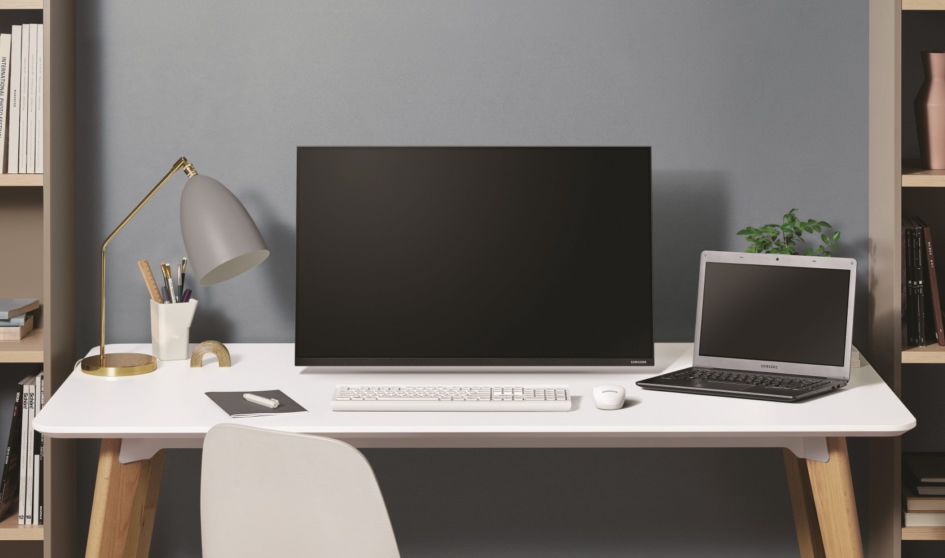Here’s 5 tips for success when working from home
I’ve been working from home for several years, long before the coronavirus came along. With so many people transitioning to work from home this past week, it can certainly be challenging to focus on work with all the bad news in the world. Here’s the five things I’ve found most important when working from home:
Find Your Routine
I’ve often read the best approach here is to keep your routine identical to your workday. I’ve found that’s good advice for the first couple weeks, but not as you get more comfortable with your own productivity working from home. Yes, it’s important to get into the mindset of working. If putting on dress clothes helps you with that, then fantastic.
Based on my own experience, my productivity skyrocketed when I incorporated the time I was saving on routines into my traditional 9 a.m. to 6 p.m. work schedule. For instance, without a commute, I use distraction-free early morning time to catch up on email, write blog posts, schedule up social posts, prep newsletters for the day before anyone comes into the office.
Setting up a task list for the day (Todoist) is tremendously helpful. Give yourself goals to hit at specific times. If you need even more structure, setup a shared doc between you and your manager with all the things you want to accomplish each day & update it as you complete things. RescueTime is also an awesome app, if you need to track your time throughout the day.
Just as important as starting out the day with a routine, it’s also important to end your work day with a routine. For me, I close out all my chat applications and shift away from my work area into a relaxed space. I will check my email again before bed, but I typically give myself an hour away from anything work related. Take your dog for a walk, get started on dinner, just find something that’s relaxing.
Isolate Your Work Space
Carve out a portion of your home that’s dedicated as a workspace. It doesn’t matter if you live in a giant house or a cozy apartment. Just pick one spot where you can focus. If you have a desk, great. If not, use your kitchen table. You can get a laptop table and sit on your couch. If you have a spare room to use, shut the door. Eliminate as much distraction as possible.
If you are in a public area of your home (with your spouse, kids or roommates roaming around), you also want to isolate your senses to improve focus. Noise cancelling headphones are ideal. Laptop or monitor sun shades focus your vision on the screen, similar to blinders on a horse; ideal for keeping focus off a nearby television (again, assuming you are in a shared space). You can always try asking your company for help before buying these products yourself.
If you have kids, I can completely understand why you can’t isolate yourself at the moment, with all the school closings. A few ideas:
- If you have a spouse also working from home & have a flexible schedule, create shifts. Swap off spending time with the kids and working throughout the day.
- Lean into meal planning. If you setup meals in the morning for everyone, you don’t have to thing about getting lunch ready in the middle of the workday.
- Set up tasks / activities for the kids when you have critical work needs; conference calls, busy work hours, etc…
Overcommunicate
One of the things I really missed when moving to WFH was the comradery among my co-workers. I missed chatting about their lives or making jokes or grabbing lunch together. There’s a real sense of loneliness that sets in when you realize you aren’t part of that world anymore, even if it’s a temporary period.
Digital communication certainly helps though. Look to Slack, Microsoft Teams, Google Hangouts, Discord and other chatting communication tools to keep in touch with your co-workers. This is a great time to invest in a digital webcam and headset, ideal for group meetings. (Also useful when keeping in touch with family during the coronavirus stay-at-home orders).
Be proactive about setting your status on your main chat client. If you are taking your scheduled lunch break or stepping away for 15 minutes for a walk outside, use the status to keep your co-workers informed. Also, be proactive about initiating chat with coworkers, setting new meetings for important projects. Be proactive about introducing yourself to new coworkers as well, perhaps someone that you haven’t even met in person yet.
If you are talking on the phone all the time for business, you may want to consider a dedicated line for business. It doesn’t even have to be a landline or a second mobile phone. You can use virtual number products like Google Voice or a Skype phone number without having to purchase additional hardware.
Reward Yourself
Think about how you spent time away from your desk when in the office and apply the same relative structure at home. Do you typically take an hour lunch break at work? Try to do the same at home. Or, more creatively, eat at your desk and split up that break into 20 minute periods you can use to talk a walk outside. There are numerous studies showing how short breaks throughout the world day can improve your creativity.
When you accomplish something on your To-do list, reward yourself with a snack or a quick fun activity. After I finish a long blog post or mail out the newsletter, I like to take 10 minutes and play through a couple songs in Beat Saber in VR. It’s fun, gets my heart rate up and alleviates stress. I feel refreshed and energized when I return to the computer, which helps with the rest of my tasks.
The same goes for improving your skill set. Be proactive about looking for training opportunities. When you are out of the office, you may miss out on opportunities offered to those in the office. Request online or in-person training courses that you think will help you do your job. Even better, seek out learning opportunities within your own company to get more one-on-one time with colleagues.
Understand your Limits
About six years ago, I came down with a cold. I thought “No problem. I’m at home, I can work through a cold.” Then it turned into the flu. I thought “No problem. I may need to take a nap during my lunch hour, but I’ve got this.” Then it turned into pneumonia in both lungs. The only sick time I took off was when I was admitted to the hospital to recover. That was stupid.
When you blend your workspace with the area you would use to recover from an illness, there’s a real inclination to take health issues somewhat less seriously; especially when the bed is only a room away. I would urge everyone to use sick time when you have it, PTO when you need it; especially as it relates to the coronavirus or any other serious illness. The same goes for setting ground rules if you have an ongoing medical issues that require consistent monitoring.














Kifa
April 1, 2020 at 1:26 am
Thanks, Mike, for contributing these simple and effective tips for the present work-from-home situation. Initially, when I started working from home before three years, I felt the need to find a routine and dedicate a workspace. Now, it is better to work in silence even though it feels lonely at times.